Prateek Garg
From Search To Sampling: Generative Models For Robust Algorithmic Recourse
May 12, 2025Abstract:Algorithmic Recourse provides recommendations to individuals who are adversely impacted by automated model decisions, on how to alter their profiles to achieve a favorable outcome. Effective recourse methods must balance three conflicting goals: proximity to the original profile to minimize cost, plausibility for realistic recourse, and validity to ensure the desired outcome. We show that existing methods train for these objectives separately and then search for recourse through a joint optimization over the recourse goals during inference, leading to poor recourse recommendations. We introduce GenRe, a generative recourse model designed to train the three recourse objectives jointly. Training such generative models is non-trivial due to lack of direct recourse supervision. We propose efficient ways to synthesize such supervision and further show that GenRe's training leads to a consistent estimator. Unlike most prior methods, that employ non-robust gradient descent based search during inference, GenRe simply performs a forward sampling over the generative model to produce minimum cost recourse, leading to superior performance across multiple metrics. We also demonstrate GenRe provides the best trade-off between cost, plausibility and validity, compared to state-of-art baselines. Our code is available at: https://github.com/prateekgargx/genre.
Utilizing Radiomic Feature Analysis For Automated MRI Keypoint Detection: Enhancing Graph Applications
Nov 30, 2023


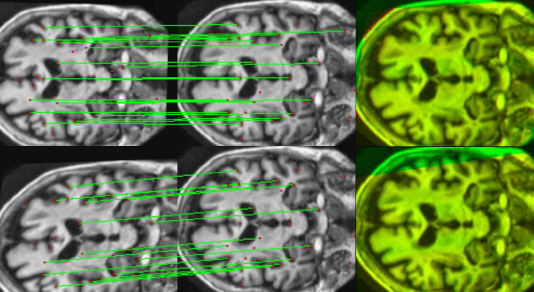
Abstract:Graph neural networks (GNNs) present a promising alternative to CNNs and transformers in certain image processing applications due to their parameter-efficiency in modeling spatial relationships. Currently, a major area of research involves the converting non-graph input data for GNN-based models, notably in scenarios where the data originates from images. One approach involves converting images into nodes by identifying significant keypoints within them. Super-Retina, a semi-supervised technique, has been utilized for detecting keypoints in retinal images. However, its limitations lie in the dependency on a small initial set of ground truth keypoints, which is progressively expanded to detect more keypoints. Having encountered difficulties in detecting consistent initial keypoints in brain images using SIFT and LoFTR, we proposed a new approach: radiomic feature-based keypoint detection. Demonstrating the anatomical significance of the detected keypoints was achieved by showcasing their efficacy in improving registration processes guided by these keypoints. Subsequently, these keypoints were employed as the ground truth for the keypoint detection method (LK-SuperRetina). Furthermore, the study showcases the application of GNNs in image matching, highlighting their superior performance in terms of both the number of good matches and confidence scores. This research sets the stage for expanding GNN applications into various other applications, including but not limited to image classification, segmentation, and registration.
Nighttime Dehaze-Enhancement
Oct 18, 2022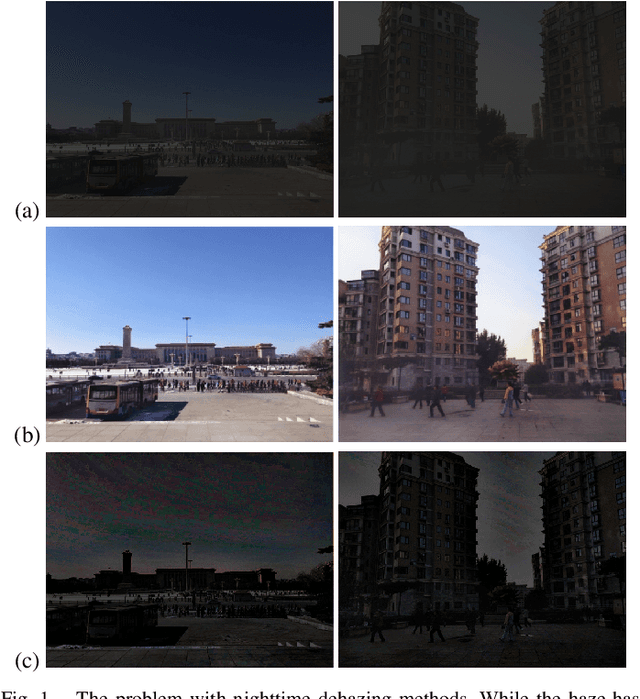

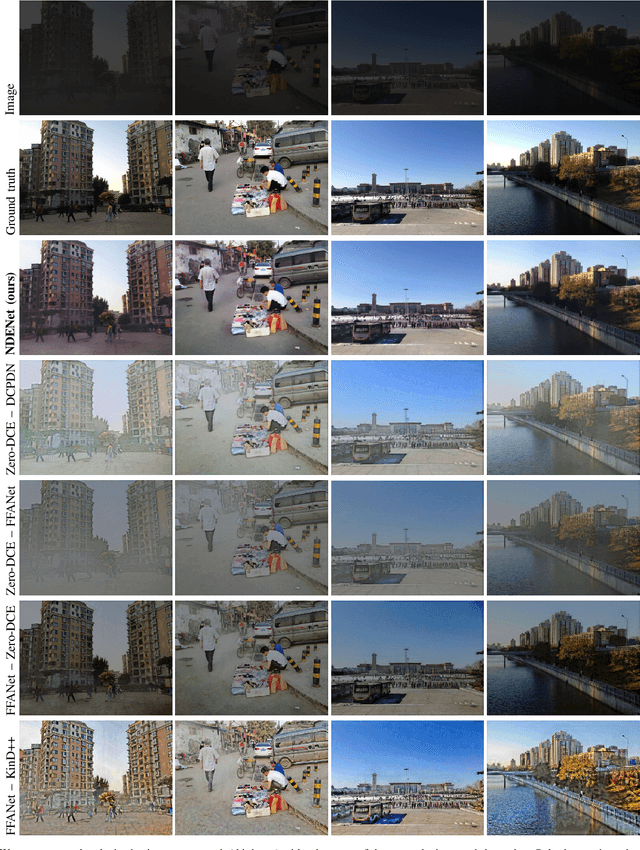
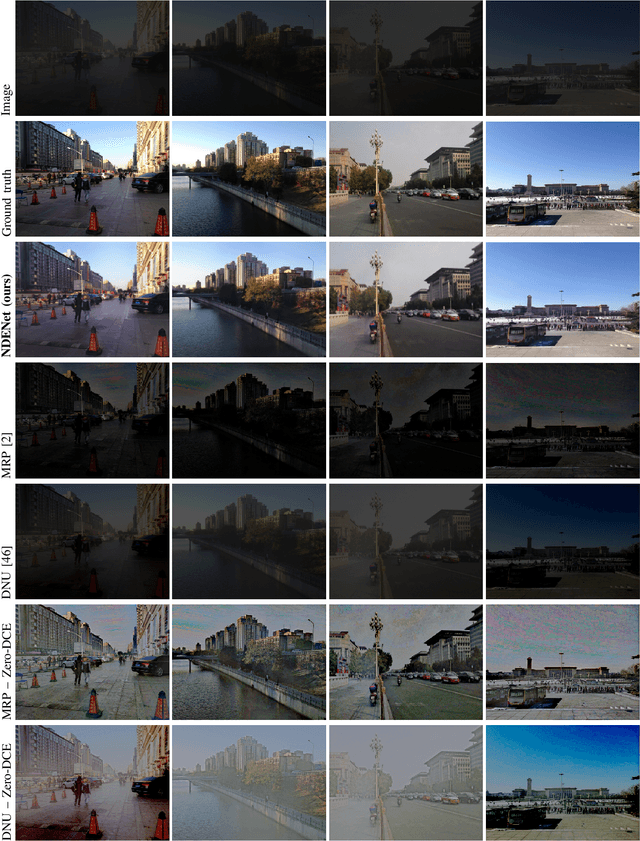
Abstract:In this paper, we introduce a new computer vision task called nighttime dehaze-enhancement. This task aims to jointly perform dehazing and lightness enhancement. Our task fundamentally differs from nighttime dehazing -- our goal is to jointly dehaze and enhance scenes, while nighttime dehazing aims to dehaze scenes under a nighttime setting. In order to facilitate further research on this task, we release a new benchmark dataset called Reside-$\beta$ Night dataset, consisting of 4122 nighttime hazed images from 2061 scenes and 2061 ground truth images. Moreover, we also propose a new network called NDENet (Nighttime Dehaze-Enhancement Network), which jointly performs dehazing and low-light enhancement in an end-to-end manner. We evaluate our method on the proposed benchmark and achieve SSIM of 0.8962 and PSNR of 26.25. We also compare our network with other baseline networks on our benchmark to demonstrate the effectiveness of our approach. We believe that nighttime dehaze-enhancement is an essential task particularly for autonomous navigation applications, and hope that our work will open up new frontiers in research. Our dataset and code will be made publicly available upon acceptance of our paper.
Revisiting RCAN: Improved Training for Image Super-Resolution
Jan 27, 2022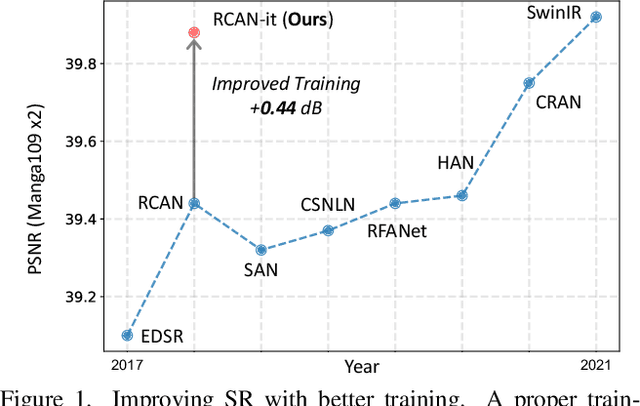

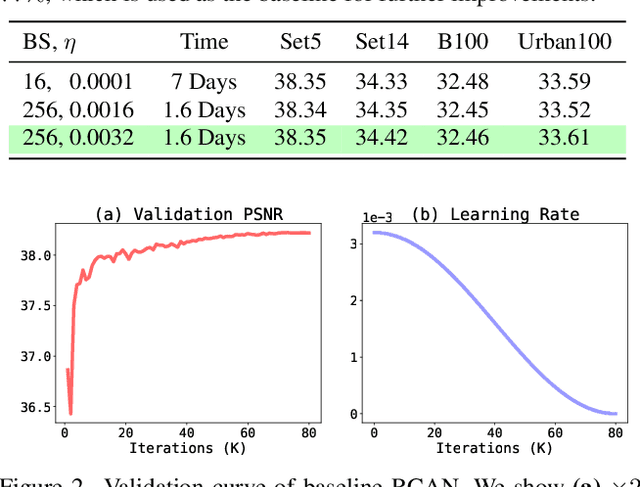

Abstract:Image super-resolution (SR) is a fast-moving field with novel architectures attracting the spotlight. However, most SR models were optimized with dated training strategies. In this work, we revisit the popular RCAN model and examine the effect of different training options in SR. Surprisingly (or perhaps as expected), we show that RCAN can outperform or match nearly all the CNN-based SR architectures published after RCAN on standard benchmarks with a proper training strategy and minimal architecture change. Besides, although RCAN is a very large SR architecture with more than four hundred convolutional layers, we draw a notable conclusion that underfitting is still the main problem restricting the model capability instead of overfitting. We observe supportive evidence that increasing training iterations clearly improves the model performance while applying regularization techniques generally degrades the predictions. We denote our simply revised RCAN as RCAN-it and recommend practitioners to use it as baselines for future research. Code is publicly available at https://github.com/zudi-lin/rcan-it.
Improving Aerial Instance Segmentation in the Dark with Self-Supervised Low Light Enhancement
Feb 10, 2021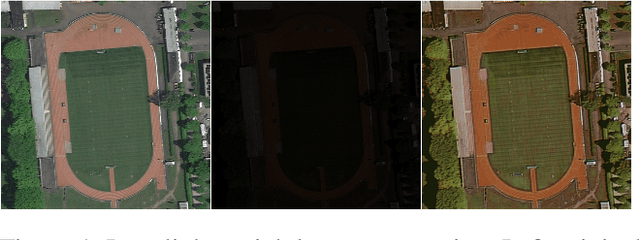



Abstract:Low light conditions in aerial images adversely affect the performance of several vision based applications. There is a need for methods that can efficiently remove the low light attributes and assist in the performance of key vision tasks. In this work, we propose a new method that is capable of enhancing the low light image in a self-supervised fashion, and sequentially apply detection and segmentation tasks in an end-to-end manner. The proposed method occupies a very small overhead in terms of memory and computational power over the original algorithm and delivers superior results. Additionally, we propose the generation of a new low light aerial dataset using GANs, which can be used to evaluate vision based networks for similar adverse conditions.
 Add to Chrome
Add to Chrome Add to Firefox
Add to Firefox Add to Edge
Add to Edge